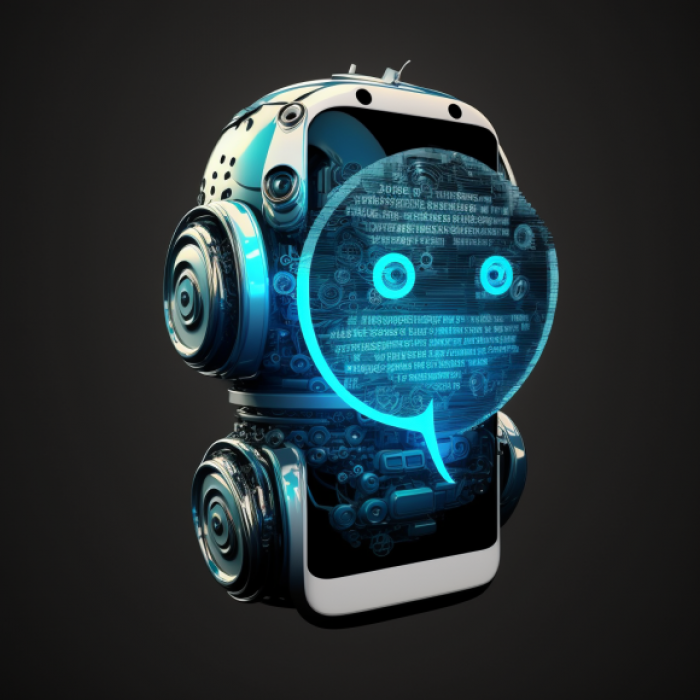4 tools to identify robot inventions due to the success of generative AI.

It has always existed. The fear that, at a certain point in technological and scientific development, humans and machines will be almost indistinguishable has always accompanied progress.
This has served as an argument for well-known works of science fiction such as the movie Blade Runner and as a promoter of inventions such as the Turing test, which the English mathematician Alan Turing designed in the early twentieth century, long before AI gave him to become an artist and wrote and painted as he does today. to distinguish robots and humans.
Although science as a whole is far from needing a Rick Deckard specialized in distinguishing almost at a glance one and the other, the explosion that has been experienced in recent months what is known as generative AI, robots trained with algorithms and capable of creating from nothing, has raised more than one eyebrow among the scientific community.
It has done so, it must be recognized because the quality of the productions is getting better after an improvement that in recent times has been revealed as exponential.
While it is true that a year ago it was still possible to speak with some sarcasm of the narrow capabilities of word processors and image creators, it is no less true that, for a few weeks, more and more evidence abounds that the time is not far off when real machines are capable, for example, to regularly create formally impeccable texts.
This has set off alarms, for example, in the educational world, which has already launched to debate about what to do with these tools: incorporate them naturally as part of the world in which students will live or prohibit them as shortcuts that prevent them from learning to express themselves.
While some of these doubts are dispelled, programmers have also set to work to try to delay as much as possible the moment in which, before a text, the dilemma of whether it has been created by a human or by a machine has no answer.
Therefore, I wanted to test first-hand 2 of these detector tools. That's how they work.
GPTZero
Web access to the beta of GPTZero. As its name suggests, GPTZero is designed to combat in some way the creation of ChatGPT, an AI word processor created by OpenAI that has been surprising experts for months with the quality of its writings.
As Business Insider has recently explained, behind the invention is Edward Tian, a 22-year-old student at Princeton University who has shared in a recent Twitter thread a video showing the promising capabilities of GPTZero to distinguish with some success a text created by ChatGPT and another written by a human being.
According to Tian himself, his motivation is none other than to combat possible cases of robotic plagiarism: "There is a lot of ChatGPT out there. Humans deserve to know what has been written with a machine!" proclaimed Tian.
Controlling the hype and not putting too many eggs in the same basket: the challenges of the AI industry in 2023 to avoid inflating a new bubble
Business Insider Spain has tested the beta version of this tool. Given to analysis of the first 6 paragraphs of this text, they have reached a score of 231 in "perplexity", a quality by which humans, sometimes without realizing it, can generate attention about what we write through how we write it.
The more perplexity, the more human, and vice versa. A text generated in English about the origin of the universe by shortly.ai, on the other hand, has barely garnered 17 points of perplexity, which reveals that the simplicity of its structures gives a clue that it is a writing of artificial intelligence.
Grammica
The grammica is a text creation platform using AI that seeks to provide companies with tools to, among many other things, generate advertising texts that help them multiply the sales of their products. However, its website also has a text ai detector tool written by AI that, very quickly and easily, is capable of launching a percentage with the chances that there is that a text has been written by a machine.
Although well-intentioned, it should be noted that the tool still has a lot of room for improvement. Business Insider Spain has done the test, first of all, with the first paragraphs of this text, which have yielded 100% humanity (to the relief of those who sign this information).
This entrepreneur has used ChatGPT to write a children's book in 2 hours: she wants to prove that generative AI can be a powerful learning tool
However, below we have also analyzed 3 texts in Spanish generated in escribelo.ai, a tool for generating texts by AI (at the time of writing, ChatGPT is saturated), and one generated in English by shortly.ai.
The result is that the 3 texts in Spanish have also been identified as written 100% by a human being, while the English text has garnered 97% of humanity.
This means that Writer still has some way to go to update its system to the latest trends in generative AI. However, it remains a tool available in cases that may be more or less clear.
Hugging Face
The much better result has been harvested by the text detection tool generated by AI of Hugging Face, a US company dedicated to the creation of machine learning tools that among its infinite repository of resources also has a robotic text detector.
He has identified that the same text on the origin of the universe written by shortly.ai (the same one to which Writer gave 97% of humanity) has a 91% chance of being false, that is, of not having been written by a human being.
The first two paragraphs of this article, on the other hand, have obtained, again for everyone's peace of mind, 99.98% of humanity.
Crossplag
It has also shown a good sense of smell with English Crossplag, a fourth tool for detecting texts written by AI that have given a 99% chance of having been written by a robot to the text written in English by shortly.ai.
Much worse has been given the text with the same theme written by escribelo.ai, something that has a lot to do with the fact that these tools, for now, have been trained with texts written mostly in English.
Finally, the first few paragraphs of this article have garnered a convincing 99% chance that they were written by a human being.











